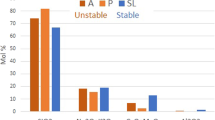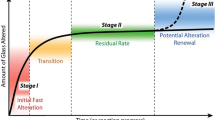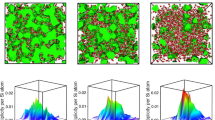Abstract
IT has been found that in silicate and aluminosilicate glasses the vitreous network of linked groups of tetrahedrally arranged oxygen atoms responds to differences of composition by dilation or by contraction1,2. This effect is of especial interest in the case of natural glasses, where the water content varies greatly.
This is a preview of subscription content, access via your institution
Access options
Subscribe to this journal
Receive 51 print issues and online access
$199.00 per year
only $3.90 per issue
Buy this article
- Purchase on SpringerLink
- Instant access to full article PDF
Prices may be subject to local taxes which are calculated during checkout
Similar content being viewed by others
References
Lacy, E. D., in “The Vitreous State” (a symposium), The Glass Delegacy, University of Sheffield (1955).
Náray-Szabó, I., Acta Phys. Acad. Sci. Hung., 8, 37 (1957); 9, 151 (1958).
Author information
Authors and Affiliations
Rights and permissions
About this article
Cite this article
LACY, E. Hydrated Glasses. Nature 183, 178–179 (1959). https://doi.org/10.1038/183178b0
Issue date:
DOI: https://doi.org/10.1038/183178b0



